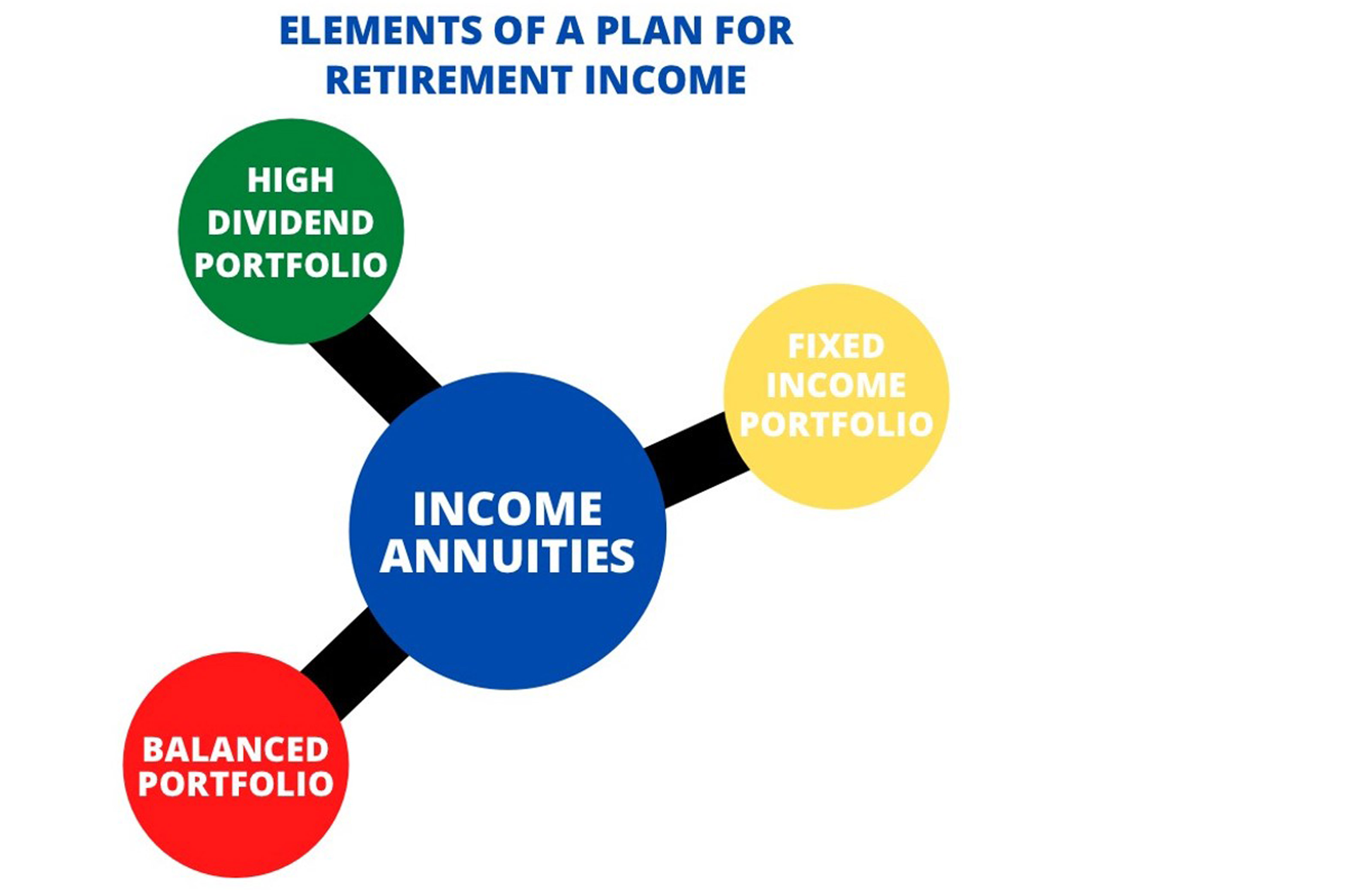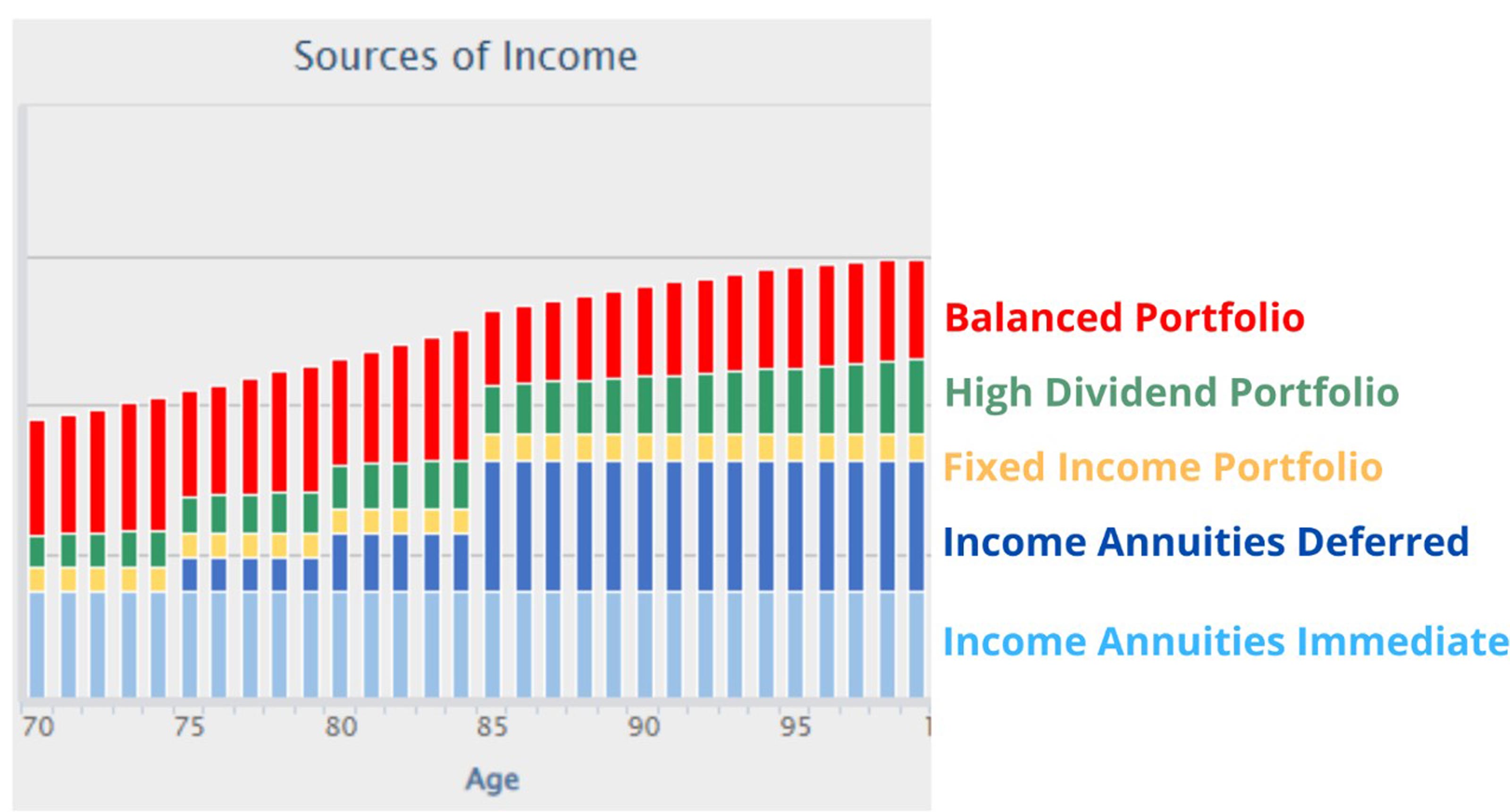For Sustainable Retirement Income, You Need These Five Building Blocks
Combining elements that you understand is the smartest way to create a secure retirement.


Sometimes we have all the elements for a great retirement, but until we put them together the right way, we don’t get the result we want.
I call it the H2O problem. We have plenty of oxygen in the atmosphere. Likewise, hydrogen. It seems simple, but until two atoms of hydrogen combine with one of oxygen, we will never get water.
When planning for retirement income, it is risky to wait for the right combination of elements to join on their own. They don’t just fall into place; you have to know what each can do and put them together in a way that produces a whole greater than the sum of the parts.
From just $107.88 $24.99 for Kiplinger Personal Finance
Become a smarter, better informed investor. Subscribe from just $107.88 $24.99, plus get up to 4 Special Issues

Sign up for Kiplinger’s Free Newsletters
Profit and prosper with the best of expert advice on investing, taxes, retirement, personal finance and more - straight to your e-mail.
Profit and prosper with the best of expert advice - straight to your e-mail.
You may sit with financial advisers who can describe all the elements required for a successful retirement, but they might not offer all of those elements in their own retirement planning practice. Maybe it’s because of regulatory or business model considerations. And even when all these elements are available, the adviser may not know how to assemble them.
It’s not easy. Retirement income requires consideration of many more elements than just the two needed to create water (H2O), and many more combinations — like 50 trillion. Literally.
The requirements of a plan for retirement income
As a starting point, your plan should be about income: starting income to meet your current needs, increasing income to help offset inflation, lifetime income so you don’t run out, and less volatile income so you feel secure.
But most investors have additional concerns, such as a legacy they want to pass on to kids and grandkids, and availability of liquid funds in case of unexpected needs or emergencies. They might also want the plan to be convenient and easy to manage, with income payments made on a regular monthly basis, and flexible so that the plan can adjust to changing circumstances or economic conditions.
And the plan elements should be easily understood, offered by highly rated companies, low-cost and tax-efficient. Bottom line: Focus on the plan and make the elements as time-tested as possible.
Identify the elements of a successful plan for retirement income
Just like in chemistry class when reviewing the periodic table, go to the list of financial products available to investors like you and select those that make sense. Or ask your advisers for their list.
Here is our list of retirement plan elements (including the most likely savings source):
- PD: Portfolio of high-dividend stocks (invested from personal savings)
- IAN: Income annuity with guaranteed payments starting now (invested from personal savings whenever possible)
- PF: Portfolio of fixed income bonds (invested from personal savings)
- IAF: Income annuity with guaranteed payments starting at future dates you select (invested from both personal savings and rollover IRA)
- PB: Portfolio balanced between growth stocks and fixed income securities (invested from rollover IRA as source of withdrawals)
Here’s a picture of how the elements might look if you were creating a retirement molecule.

Putting the elements together
As a compound your plan might look like PD3IAN4PF1IAF2PB4. However, and this is the tricky part, unlike this jumble of elements, the compound you’ve engineered needs to be designed to be able to change form over time and continue for your entire lifetime.
The bar chart below demonstrates the income these elements produce when combined using the Go2Income planning algorithm. Note how each element contributes different amounts at different times over your lifetime. Of course, the portfolios will contribute income based on the planning assumptions, while the annuity payments are guaranteed* and serve as the plan’s foundation.

Results of your plan
To evaluate your plan, see if it meets your income requirements: starting income to meet your current needs, increasing income to help offset inflation, lifetime income so you don’t run out, and less volatile income so you feel secure. And also look at your objectives for legacy and liquidity.
Unlike H2O, there are virtually an infinite set of possible combinations to match your objectives and personal circumstances.
In the end, creating a successful plan will allow you to:
- Use basic elements in the most effective and efficient way
- Create a plan that combines the right mix of elements
- Personalize the combination to meet your objectives
If you are interested in working on your own “chemistry” project, visit Income Allocation Planning at Go2Income. We will ask a few easy questions so you can design a plan that meets your objectives.
* Guarantees are subject to the claims-paying ability of the insurer.
Related Content
- How a Fixed Index Annuity Can Manage Retirement Income Risks
- A Challenging Retirement Plan Mission: Not Impossible
- Retirees: Worry Less About Markets, Long-Term Care and Taxes
- Annuity Payments Are 30% to 60% Higher: Time to Reconsider
- Don’t Bet Your Retirement on Stocks: Follow These Four Tips
Profit and prosper with the best of Kiplinger's advice on investing, taxes, retirement, personal finance and much more. Delivered daily. Enter your email in the box and click Sign Me Up.

Jerry Golden is the founder and CEO of Golden Retirement Advisors Inc. He specializes in helping consumers create retirement plans that provide income that cannot be outlived. Find out more at Go2income.com, where consumers can explore all types of income annuity options, anonymously and at no cost.
-
 How to Safely Open an Online Savings Account
How to Safely Open an Online Savings AccountOnline banks offer generous APYs that most brick-and-mortar banks can't match. If you want to make the switch to online but have been hesitant, I'll show you how to do it safely.
-
 7 Ways to Age Gracefully Like the Best Stock Photo Seniors
7 Ways to Age Gracefully Like the Best Stock Photo SeniorsAs a retirement editor, I've gleaned valuable wisdom (and a lot of laughs) from one older couple that tops the seniors' stock photo charts.
-
 My First $1 Million: Banking Executive, 48, Southeast U.S.
My First $1 Million: Banking Executive, 48, Southeast U.S.Ever wonder how someone who's made a million dollars or more did it? Kiplinger's My First $1 Million series uncovers the answers.
-
 Time to Close the Books on 2025: Don't Start the New Year Without First Making These Money Moves
Time to Close the Books on 2025: Don't Start the New Year Without First Making These Money MovesAs 2025 draws to a close, take time to review your finances, maximize tax efficiency and align your goals for 2026 with the changing financial landscape.
-
 Is Fear Blocking Your Desire to Retire Abroad? What to Know to Turn Fear Into Freedom
Is Fear Blocking Your Desire to Retire Abroad? What to Know to Turn Fear Into FreedomCareful planning encompassing location, income, health care and visa paperwork can make it all manageable. A financial planner lays it all out.
-
 How to Master the Retirement Income Trinity: Cash Flow, Longevity Risk and Tax Efficiency
How to Master the Retirement Income Trinity: Cash Flow, Longevity Risk and Tax EfficiencyRetirement income planning is essential for your peace of mind — it can help you maintain your lifestyle and ease your worries that you'll run out of money.
-
 I'm an Insurance Expert: Sure, There's Always Tomorrow to Report Your Claim, But Procrastination Could Cost You
I'm an Insurance Expert: Sure, There's Always Tomorrow to Report Your Claim, But Procrastination Could Cost YouThe longer you wait to file an insurance claim, the bigger the problem could get — and the more leverage you're giving your insurer to deny it.
-
 Could a Cash Balance Plan Be Your Key to a Wealthy Retirement?
Could a Cash Balance Plan Be Your Key to a Wealthy Retirement?Cash balance plans have plenty of benefits for small-business owners. For starters, they can supercharge retirement savings and slash taxes. Should you opt in?
-
 7 Retirement Planning Trends in 2025: What They Mean for Your Wealth in 2026
7 Retirement Planning Trends in 2025: What They Mean for Your Wealth in 2026From government shutdowns to market swings, the past 12 months have been nothing if not eventful. The key trends can help you improve your own financial plan.
-
 What Defines Wealth: Soul or Silver? Good King Wenceslas' Enduring Legacy in the Snow
What Defines Wealth: Soul or Silver? Good King Wenceslas' Enduring Legacy in the SnowThe tale of Good King Wenceslas shows that true wealth is built through generosity, relationships and the courage to act kindly no matter what.
-
 An Investing Pro's 5 Moves to Help Ensure 2025's Banner Year in the Markets Continues to Work Hard for You in 2026
An Investing Pro's 5 Moves to Help Ensure 2025's Banner Year in the Markets Continues to Work Hard for You in 2026After a strong 2025 in the stock market, be strategic by rebalancing, re-investing with a clear purpose and keeping a disciplined focus on your long-term goals.